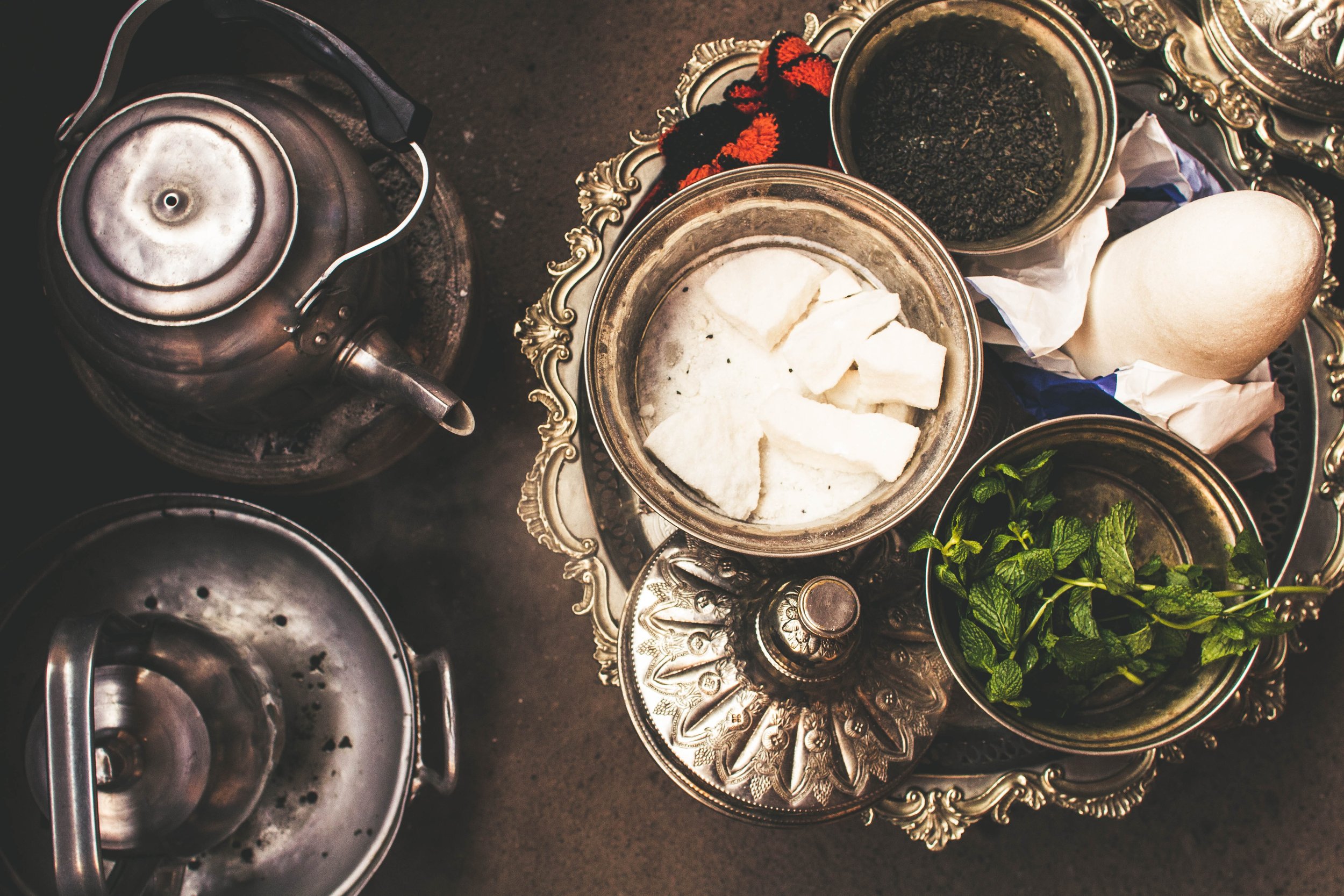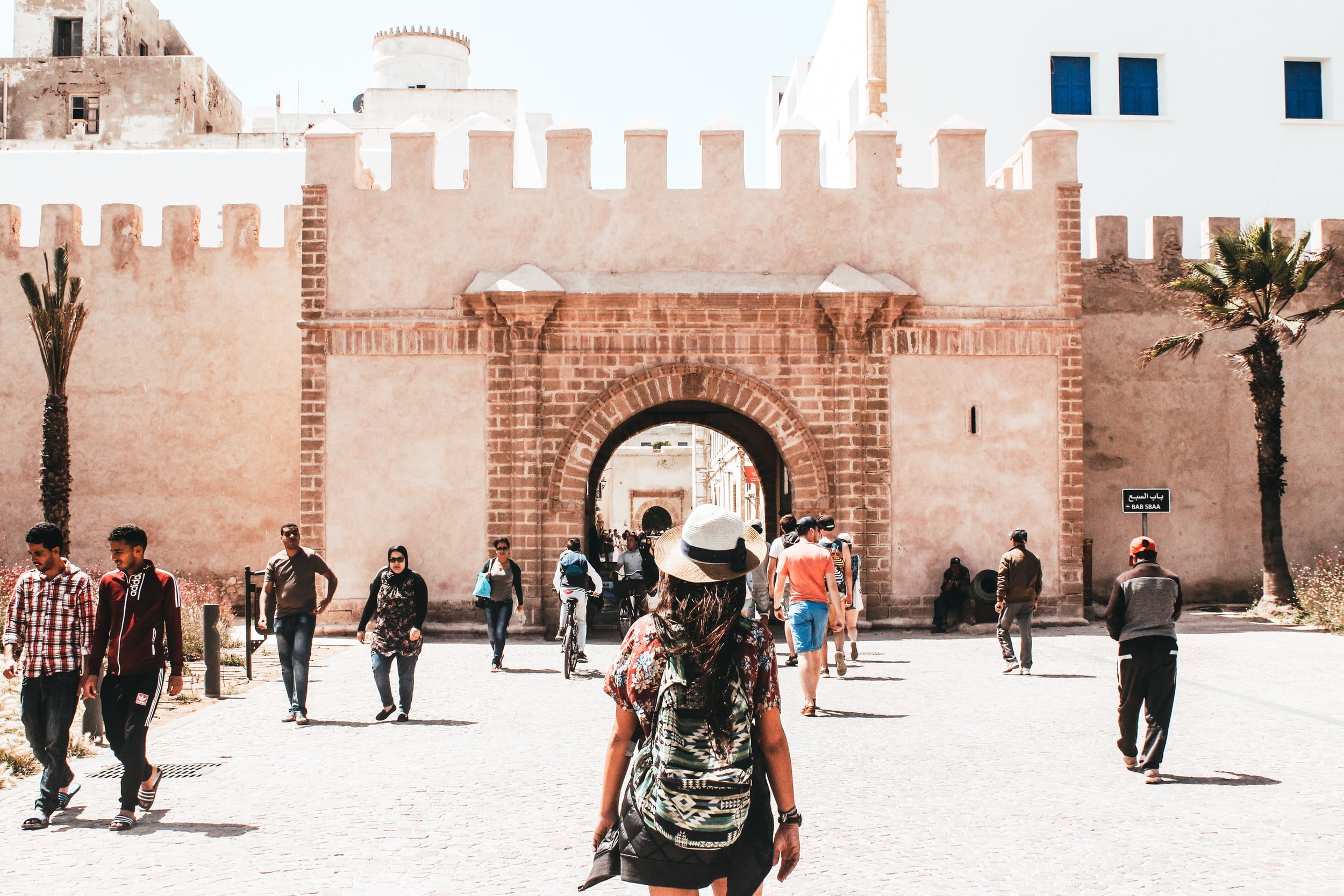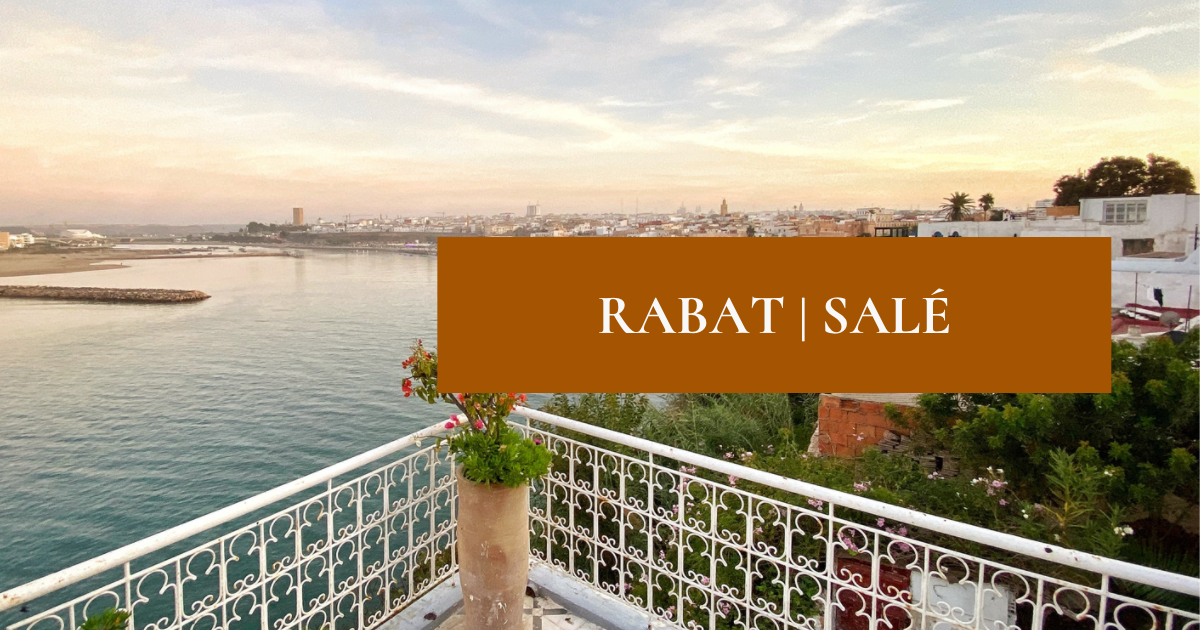Food and Drink in Morocco
How do you eat your food? For many people in the world, we are accustomed to using silverware. However, there are places in the world where it is more common for people to use their hands. Obviously this all depends on what type of food is being consumed.
*Dad joke alert* This is all strange, because I usually eat food with my mouth.
…Perhaps once you finish rolling your eyes at the attempt at humor, we can venture into the area of food and drink in Morocco. In general, the food in Morocco is very flavorful, and it may not be a surprise to you as Moroccan food is growing in its popularity. In fact, it is not uncommon in the United States to find at least one Moroccan restaurant in any city of considerable size. It was at one of these restaurants in Oklahoma City that first gave my wife the idea of moving to Morocco one day. If you have the opportunity to eat Moroccan food in your home country, then we encourage you do to so. If, however, you are blessed to try the food on a visit to Morocco, then here are a few things to keep in mind.
Eating in a Moroccan’s home
On one particular visit while we lived in Fes, we were invited to eat couscous on Friday at a house of some friends. Couscous is almost exclusively served on Fridays (the Muslim holy day), and you will be hard pressed to find it another day of the week, in restaurants or in homes (except for holidays and special occasions). During this visit, we were joined by many members of the large extended family. We were all seated around a large, circular table on wheels. Some of us were seated on the Moroccan froshes (couches), while others filled out the circle with small, wooden chairs. The large, steaming plate of couscous was placed in the middle of the table, and after “bismillah” was mentioned, we all dove in. Using exclusively our RIGHT hands, we used spoons and our hands to eat the portion of food directly in front of us. Caution: Do not use your left hand when grabbing food from the communal dish, as the left hand is considered unclean. Once the food is on your own plate in front of you, then it is acceptable to use both hands to bring the food to your mouth. I was seated next to the mother, who was using her fingers to scoop out couscous and rolling it into a ball in her hand. Noticing the difference between our eating styles, I brought attention to her use of hand. She said that when her children were infants, she would scoop out the couscous, roll it into a ball, then pass it off to them for their enjoyment. Upon saying this, she plopped a large ball into my own hand, and we continued eating.
On this particular day we enjoyed the traditional couscous dish. We have had the pleasure of being invited into other friends’ homes, enjoying tajine and other traditional dishes. It is most honoring of the hosts to eat what it placed in front of you. What do you do if served a dish that you don’t prefer or is actually very different? My experience is that most Moroccans either have a sense of what Westerners are accustomed to eating, or at least eat foods that Westerners would not consider “strange.” However, on occasion we have been served some foods that were hard to stomach: quite literally cow stomach…and lungs, and kidneys. Chicken livers are not uncommon, nor is neck. During the Eid Kebir, each family will purchase a sheep and then consume all of the edible parts, which includes brain, spleen, heart, and intestines. But I don’t want to scare you, because most likely you will not be served any of these items.
On a final note, it is not uncommon to find snails for consumption, especially as the weather gets colder. The snails are prepared in a broth, which is said to be good for your health. The only time we were served snails was from our host family during our extended homestay. Our homestay parents knew that snails were strange for us, so they wanted us to try them but did not expect us to finish them. My wife and I drank the tasty broth, but were a bit hesitant with the snails themselves. We used toothpicks to fish out the meat, and then chomped down. Both of us just ate one apiece, and our homestay father - who loves snails - was excited to finish off our bowls.
Eating food in a restaurant
There is not too much out of the ordinary when eating in a Moroccan restaurant, but there are some differences. Due to the French influence throughout history, there is a noticeable amount of French type foods available. One common item is French tacos, which are not at all like Mexican tacos. Paninis and hamburgers are also readily available. For Americans, we are accustomed to free refills, which is not common in Morocco; once you finish your drink you will have to request a new one. Once you have finished your meal, do not expect your waiter to bring the check until you specifically request it. Give the universal “check please” sign and he or she will bring you the bill. If you don’t request the check, you could end up waiting a very long time.
You will rarely be served tap water unless you specifically request it. If you are just visiting Morocco, then we do not recommend drinking the tap water. Those people staying in Morocco for longer periods of time may have had enough time for their bodies to adjust to tap water. When we lived in the new city of Fes, we drank the tap water; however, we did not drink the tap water in the old city as someone mentioned that the pipes there were likely older and less well-maintained. In Casablanca we would drink the tap water, but it frankly does not taste good. We have purchased a reverse osmosis filter that has saved us from having to buy containers of bottled water. The most common bottled (still) water is Sidi Ali, but there are a variety of other brands available.
Finally, we thought we would leave you with a list of common Moroccan foods that you may have the opportunity to taste while visiting.
Traditional Moroccan Foods
Couscous: Couscous refers to the fine granules of rolled semolina. The word comes from the Berber root √K-S means "well formed, well rolled, rounded.” This Moroccan meal can be made with beef or chicken, and includes vegetables as well, such as carrots, pumpkin, cabbage, zucchini, and chickpeas. Couscous is the traditional food for Fridays, but is also prepared for special occasions.
Tajine: A tajine is both the name of the dish and the name of the domed vessel it is cooked in. Tajines can be made with any kind of meat or even as a vegetarian meal. In Moroccan homes, the tajine is usually eaten from a shared plate. The most important thing is plenty of bread to soak it all up! My favorite varieties of tajine are Beef or Lamb with Prunes and Chicken with Preserved Lemon and Olives.
Zaalouk: This cooked salad is made with eggplant, tomatoes, garlic, olive oil, and spices and served as a side dish to many meals but is usually presented as a dip alongside crusty bread.
Maakouda - In the old city of Fes, as well as other places throughout the coutry, these deep-fried mashed potato balls are a staple.
Harira: Most commonly eaten during Ramadan, harira is a tomato-based soup laden with lentils and chickpeas. Rice or fine broken noodles (chaariya) are often added as well.
Sardine Mishwi - Along Morocco’s coastline grilled sardines are a required meal to try!
Bissara - Warm soup made with dried lava beans and finished with a drizzle of olive oil a sprinkle of cumin.
Seffa: Steamed and sweetened couscous or broken vermicelli (chaariya) is mounded on a platter and garnished with powdered sugar, ground fried almonds, raisins and cinnamon.
Tanjia: Named for both the a clay pot and the dish that is cooked inside, the tanjia is especially common in Marrakesh. It’s traditionally filled with chunks of beef or lamb and a bunch of spices, then slow cooked in the embers of a furnace.
Shakshouka: Eggs poached in a sauce of tomatoes, olive oil, peppers, onion and garlic, commonly spiced with cumin, paprika and cayenne pepper.
Pastries and breads: Khobz is the traditional Moroccan bread made daily and eaten with ever meal, often used as the main utensil for eating tajine. Sfenj are deep friend donuts. Msemen are square pancakes, and baghrir are round, holey pancakes. Other treats include shabakiya, briouwats, and many other confections found in the bakeries of Morocco.
More Moroccan foods can be found here.
B Saha! (To your health!) Bon apetit!
How to Make Moroccan Mint Tea at Home
1 Tablespoon loose gunpowder green tea
5 cups boiling water
Plenty of sugar!
Bunch of fresh mint
Put tea in teapot and pour in 1 cup boiling water, then swirl gently to warm pot and rinse tea. Strain out and discard water, reserving tea leaves in pot.
Add remaining 4 cups boiling water to tea and let steep 2 minutes. Stir in sugar (to taste) and mint sprigs and steep 3 to 4 minutes more. Serve in small heatproof glasses.
Are you visiting Morocco soon? Start your travels with us to learn some Moroccan Arabic phrases and cultural dos and don’t and to have the best trip available to you.







































Morocco is a very unique country for several reasons. The first is its strategic location in the northwest of the continent of Africa, just 14 kilometers south of Europe. This beautiful country is bordered by the Mediterranean Sea in the North, the Atlantic Ocean in the West, Algeria to the East, and Mauritania to the South. For this reason, Morocco is a crossroads where cultures, civilizations, and ethnicities meet.